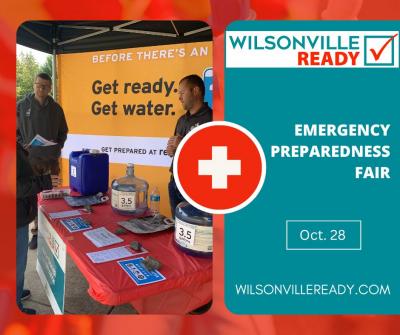Storing Emergency Water: an Essential Preparation Goal
Storing drinking water may be the single-most important thing people can do to prepare for an emergency.
Our partners at the Regional Water Providers Consortium recommend storing 14 gallons of water for each household member; about half a gallon per day for drinking and a half-gallon for sanitation and food preparation (more may be needed to accommodate pets or individuals with special needs). If space is tight, store as much as possible.
The best place to store water is in a consistently cool, dark location that is easy to access. Water not commercially bottled should be replaced every six months.
Commercially bottled water
Purchasing commercially bottled water is the easiest way for many people to build a backup water supply for an emergency. Commercially bottled water should be stored in its original sealed container. Don’t open it until it is needed, and observe the “use by” date.
Sanitized containers
Water storage containers should be properly sanitized, have tight seals, be made of food-grade plastic or steel, and designed to hold water; they can be found at most outdoor/camping stores (or two-liter plastic soft drink bottles can be used). Don’t use breakable glass, plastic jugs or cardboard containers that have contained milk or fruit juice, as bacteria-causing milk protein and fruit sugars cannot be effectively removed from plastic or cardboard containers.
Sanitizing water containers
The Regional Water Providers Consortium offers these steps to sanitize water containers:
- Wash the container and lid with dish soap and water
- Rinse it completely with clean water
- Mix one teaspoon of unscented liquid household chlorine bleach and one quart of water
- Pour the bleach water solution into your container
- Cover the container and shake it for 30 seconds, making sure bleach water covers all inside surfaces
- Pour the bleach water out of the container
- Air-dry the sanitized container before filling





